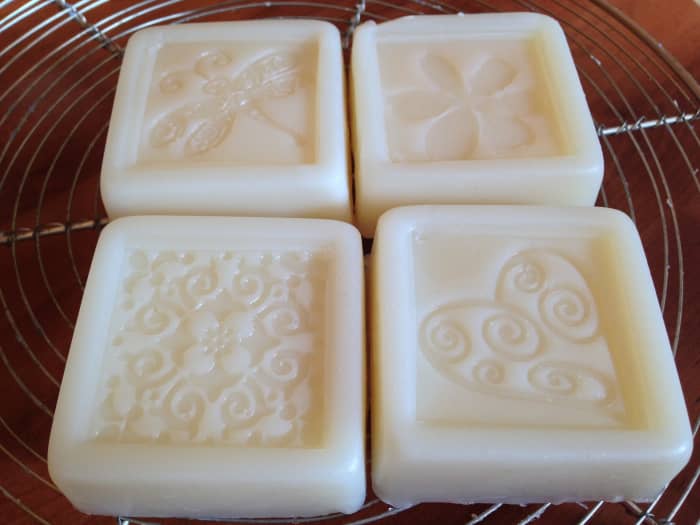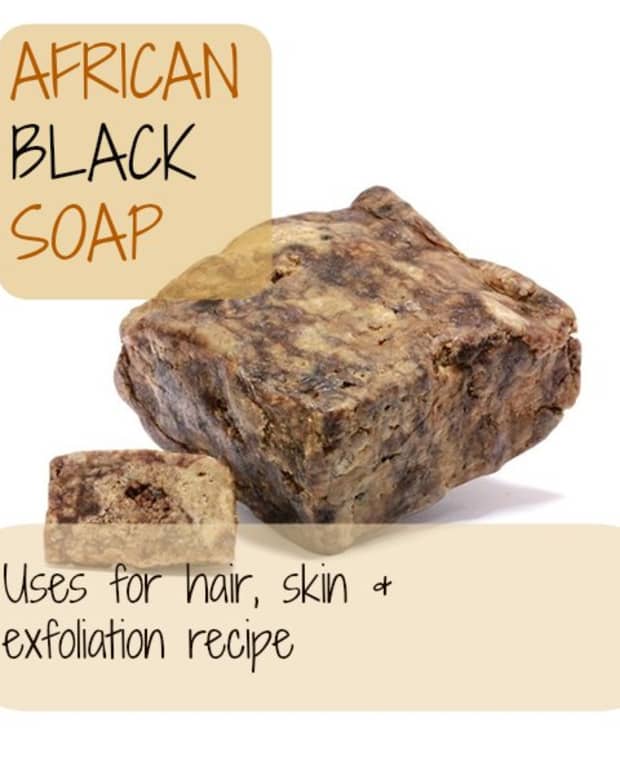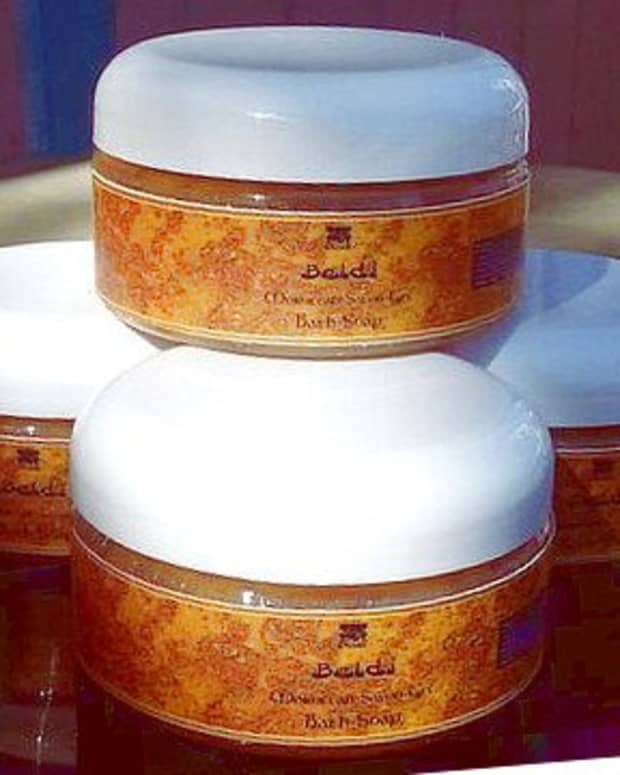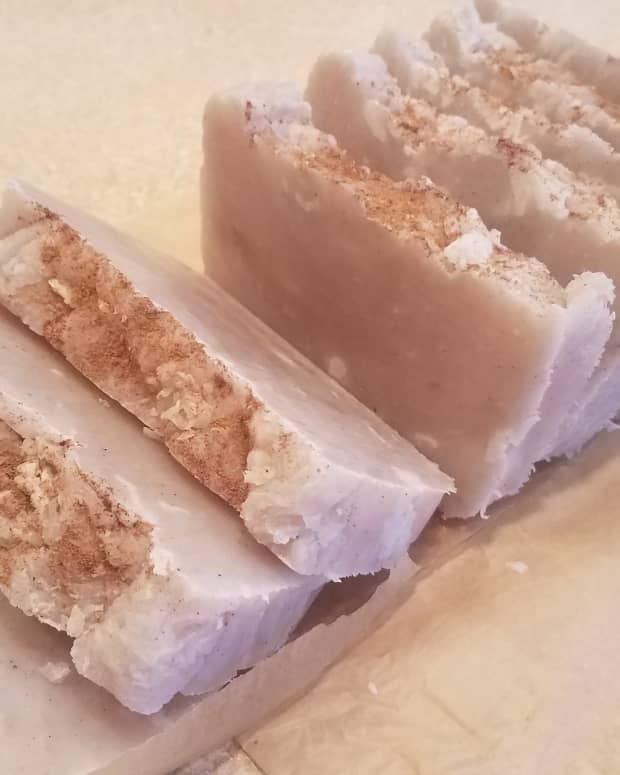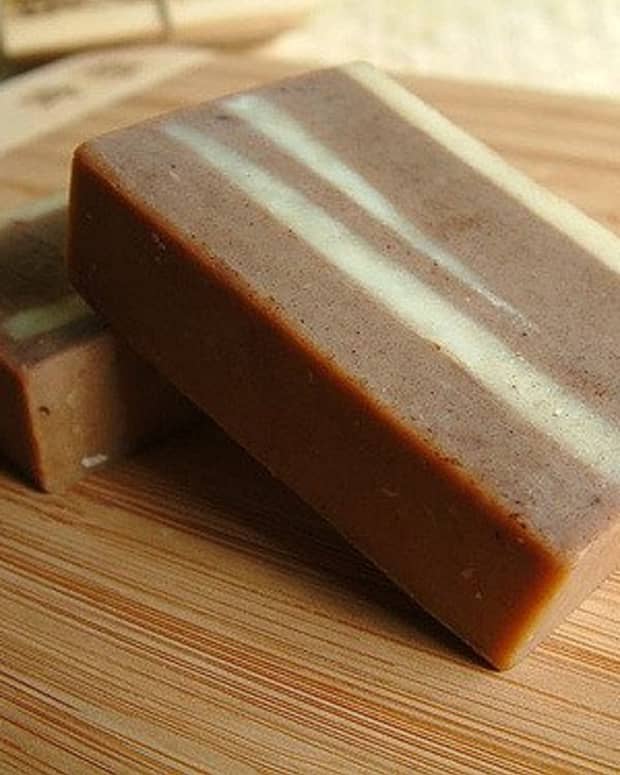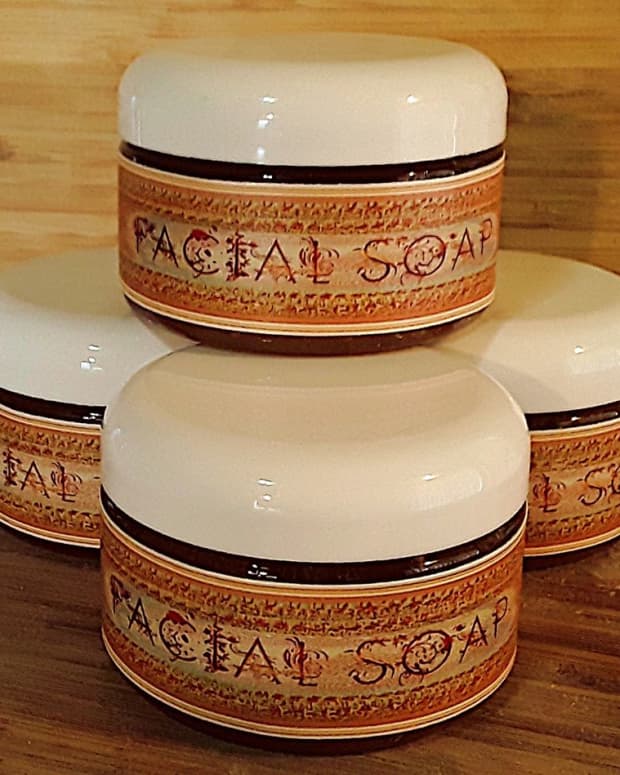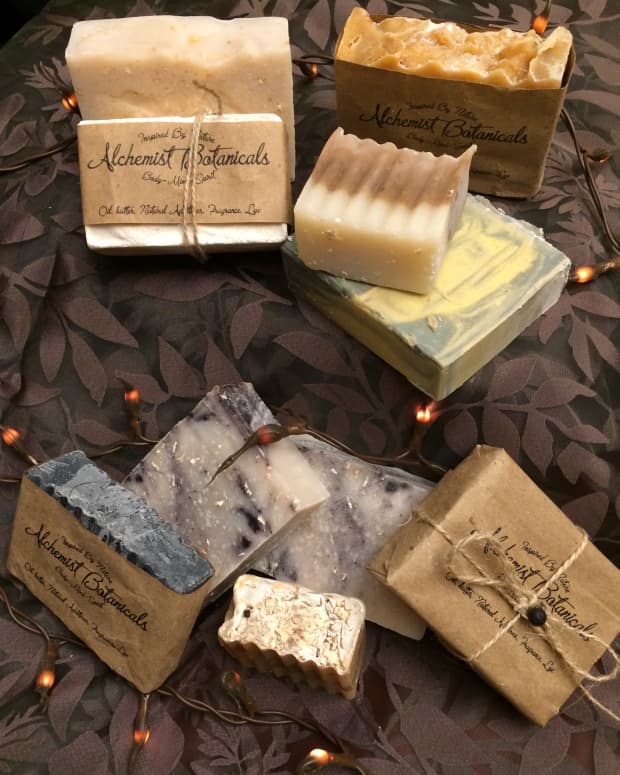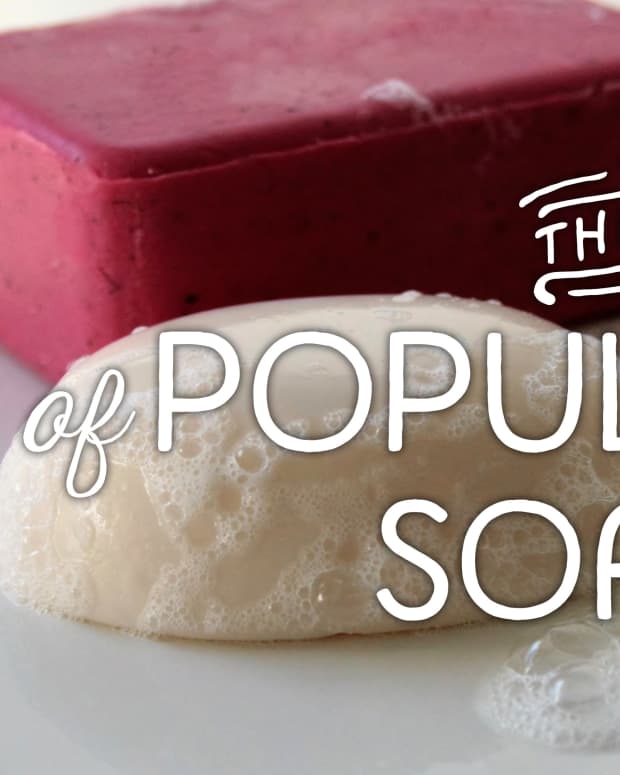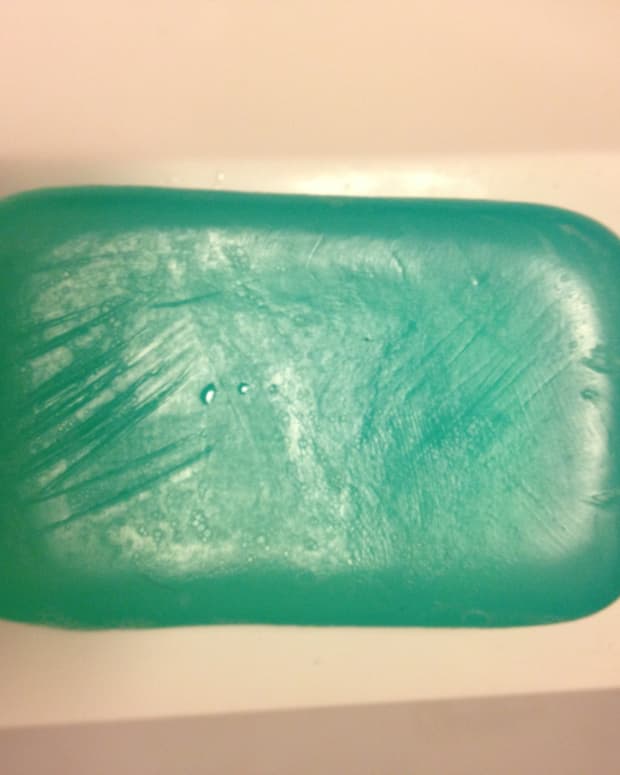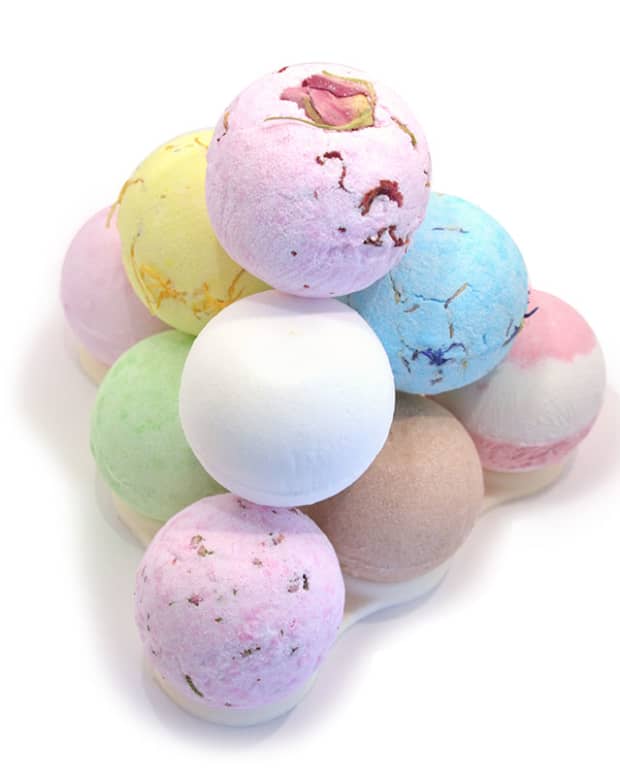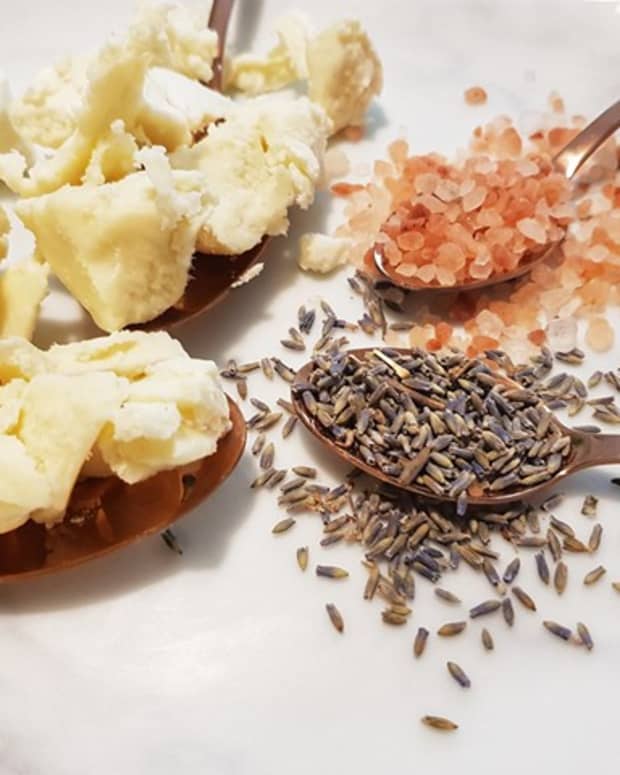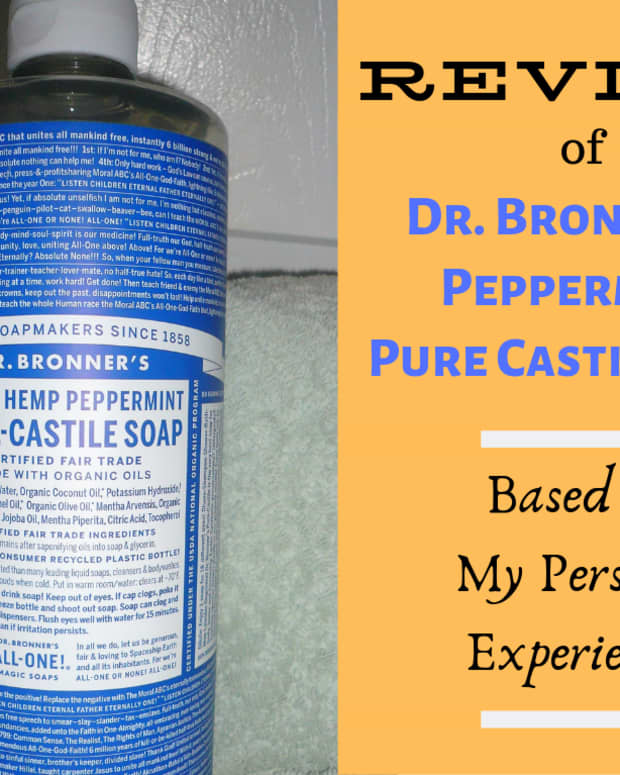5 Wonderfully Soothing Shea Butter Soap Recipes
Kimberly is a 19-year-old jewelry artist, soap maker, and crocheter. She lives happily with her boyfriend in northern Minnesota.
Overview of Shea Butter Soaps
Shea butter is a popular ingredient for making luxury soap bars that your skin will love. Depending on what additives you use or what recipe you follow, these soaps can have all kinds of amazing benefits for your skin. Shea butter creates a wonderful long-lasting bar of soap, with a nice creamy and hydrating lather. It can be used in high or low concentrations in your soap (up to about 25% of your total recipe). This butter is also wonderful for helping in the healing process of stretch marks and for clearing up acne.
Cold Process Safety Measures
When making cold process soaps, you will be using an ingredient called lye. Lye is a very dangerous and caustic chemical that can cause serious injuries if not handled correctly. Below is a basic list of rules you should follow when working with lye.
- Wear protective gear. You do NOT want this on your skin (gloves that go decently high, an apron is also nice.)
- Lye releases a gas that you do not want to breathe in, so when making soap, make sure to do so either outside or in a well-ventilated area.
- Do not do this process around children or pets, breathing in the chemical is very bad for them as well.
- When mixing your lye and water solution you want to do so in a heat-safe bowl, I personally use a big glass mixing bowl.
- Work with lye on a heatproof surface. Even if your bowl won't melt, the solution does reach close to 200 degrees Fahrenheit, so the bowl still gets very hot.
- Wear glasses or protective eyewear.
- ALWAYS add your lye to your water. If you do so, the other way around it will explode, and you will have lye water on everything.
- Never use lye in aluminum. The two things chemically react, and it's not pretty.
- Make sure you allow your soap to cure for at least four weeks though I usually wait for six just to be safe. If you use it to soon and the soap hasn't cured yet, you can get lye burns by using it.
Cold process soap making is a dangerous process if you don't take the proper measures. However, if you follow the rules above (there may be a few extra though most cold process tutorials go over them more in-depth) cold process soap making is a lot of fun and very rewarding.
About the Recipes
All of the recipes below are made using the cold process soaping method, so please follow all safety measures for using lye. Cold process soap making is the oldest and in my opinion, the easiest way of making soap completely from scratch. The recipes below use shea butter in a variety of different concentrations and with a variety of different oils. Each recipe will give your skin different benefits and will be better for different skin types, descriptions of the recipes will be written above the recipe.
Super-Hydrating Shea Butter Soap
This recipe is a real treat that your skin will love you for! The coconut oil makes a nice bubbly lather while shea butter makes a creamy lather. Olive oil and shea butter are also a very nourishing combination that is great for dry and cracking skin. This recipe is a good beginner's recipe as it doesn't use many ingredients and the ones listed are easy to find and affordable.
- 5 oz palm kernel oil
- 4 oz coconut oil
- 6 oz olive oil
- 1 oz shea butter
- 2.37 oz lye
- 6 oz water
Sensitive Skin Shea Butter Soap
This soap recipe is perfect for those with sensitive skin. Avocado oil is extremely soothing and hydrating to keep your skin from drying out, and the coconut oil makes a super bubbly soft lather. For scent, you can use any kind of essential oil or scent oil you enjoy, but lavender oil would be the best for soothing.
- 18.236 oz Avocado oil
- 9.594 oz Palm oil
- 8.148 oz Shea butter
- 8.148 oz Coconut oil
- 4.797 Jojoba oil
- 1.48 oz Essential oil or scent oils
- 6.172 oz Lye
- 18.236 oz water
Simply Soft Shea Butter Soap Recipe
This recipe is another one great for beginners because the ingredients are easy to work with and easy to find. Olive oil and shea butter always make a very hydrating bar of soap, mixed with coconut oil to give it a nice bubbly lather this recipe is a real treat. For scent you can use any kind of essential oil or scent oil that you enjoy, some of my personal favorites are; lavender essential oil, peppermint essential oil, lilac scent oil, or mango scent oil.
- 4.8 oz Olive oil
- 4.8 oz Coconut oil
- 3.2 oz Shea butter
- 3.2 oz Palm oil
- .8 oz Essential or scent oils
- 2.2 oz lye
- 6 oz water
Luxury Soft Skin Soap
This recipe is wonderful for people with sensitive dry skin. The avocado butter is perfect for soothing and hydrating while being paired with sweet almond oil to heal and replenish. This is a perfect recipe for those with acne or stretch marks, and can naturally have a huge impact on the healing process.
- 2 oz Avocado butter
- 1 oz Sweet almond oil
- 1 oz Shea butter
- 7 oz Coconut oil
- 8 oz Olive oil
- 12 oz Palm oil
- 4.2 oz Lye
- 10.2 oz Water
Vegan-Friendly Creamy Soap Recipe
This recipe uses a special ingredient; coconut milk. When making soap with milk you mix it with the water and continue the cold process naturally. Coconut milk makes a super creamy soft bar of soap with lots of nutrients. This bar is wonderful for people with dry or cracked skin, stretch marks, or acne. Milk in soap is always a wonderful addition and since this is coconut milk it's also vegan friendly!
- 4.8 oz Shea butter
- 6.35 oz Coconut oil
- 12.7 oz Olive oil
- 3.175 oz Castor oil
- 4.8 oz Palm oil
- 3.42 oz Coconut milk
- 7.05 oz Water
- 4.34 oz Lye
Read More From Bellatory
Cold process soap
This content is accurate and true to the best of the author’s knowledge and is not meant to substitute for formal and individualized advice from a qualified professional.
Questions & Answers
Question: I don’t like using palm oil, is there an alternative when making soap?
Answer: In most recipes, palm oil and coconut oil can be switched around. However, I'm not 100% in these recipes so I would go to soapqueentv. It's a website and they have a superfatting calculator on there where you can enter these recipes with coconut oil instead and it will tell you if that's an option.
Question: Can I use Crisco instead of palm oil?
Answer: I have never used Crisco in soap making. I've heard it really clogs your pores and makes a greasy bar of soap. I also believe it will saponify differently.
Question: How much soap do these recipes make? Roughly?
Answer: About a pound each! Each one should fill your average sized soap loaf!
Question: Are the oils for the soap measured by weight or volume?
Answer: Weight!
© 2016 TheNaturalRoze
Comments
jessica on August 04, 2020:
hi i was wondering like how do yo actully make it
TheNaturalRoze (author) on July 05, 2016:
I'm sorry I forgot to link my cold process soap tutorial in this one
https://discover.hubpages.com/art/Cold-process-soa
If you have any questions still after reading let me know!
Virginia Kearney from United States on July 05, 2016:
Could you explain how to use these recipes to make soap? I would love to learn to do this.

